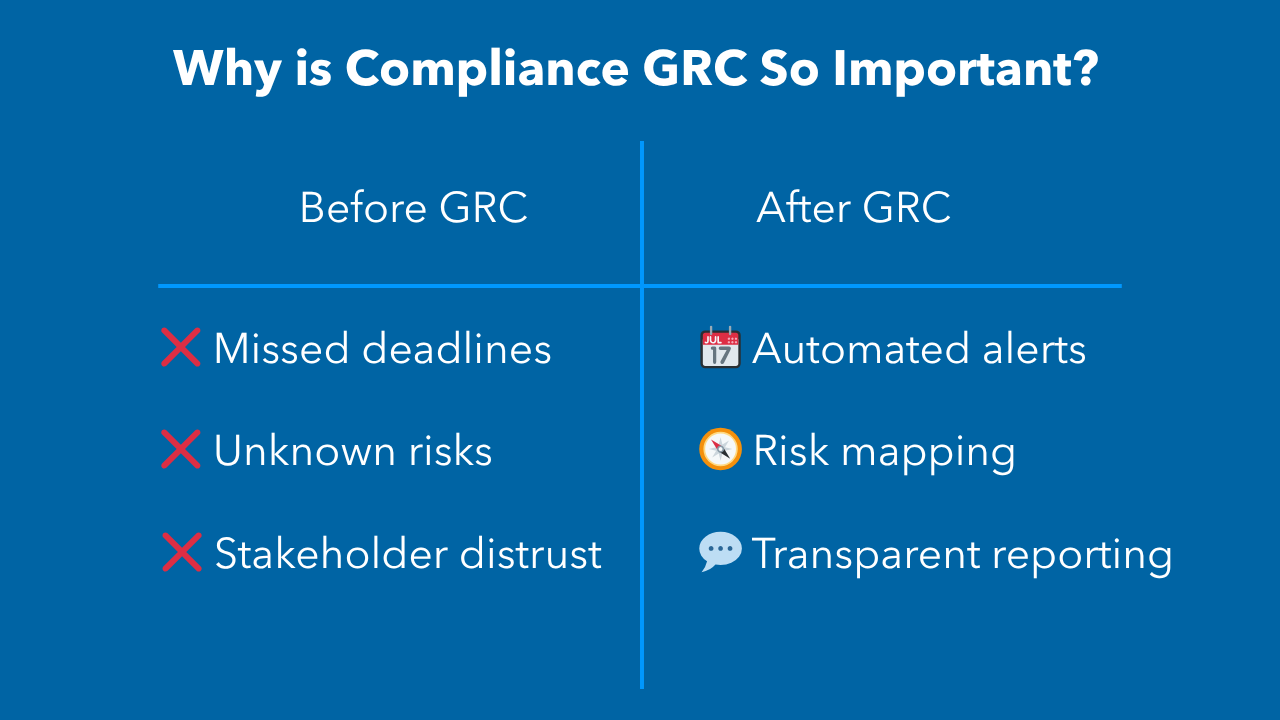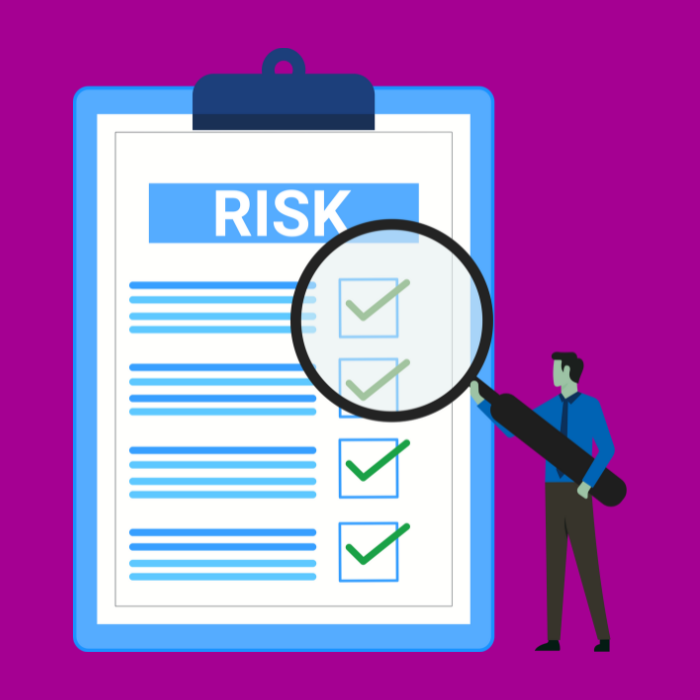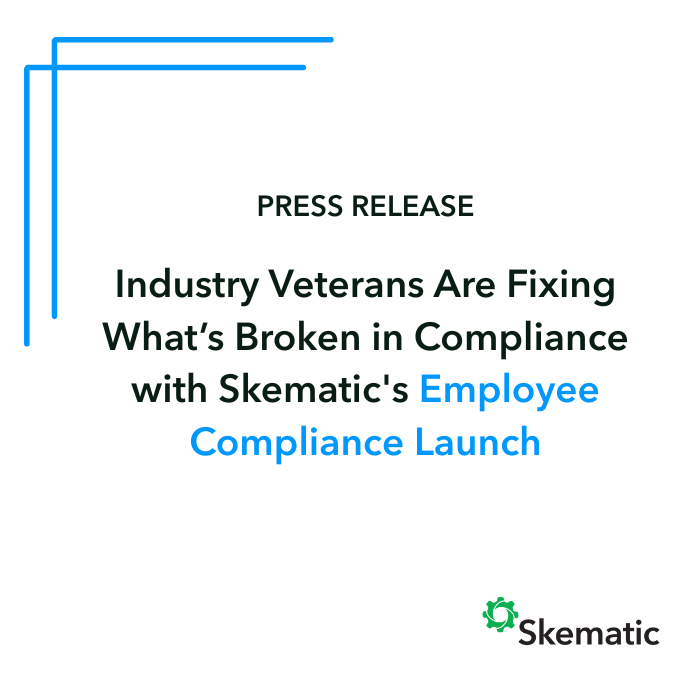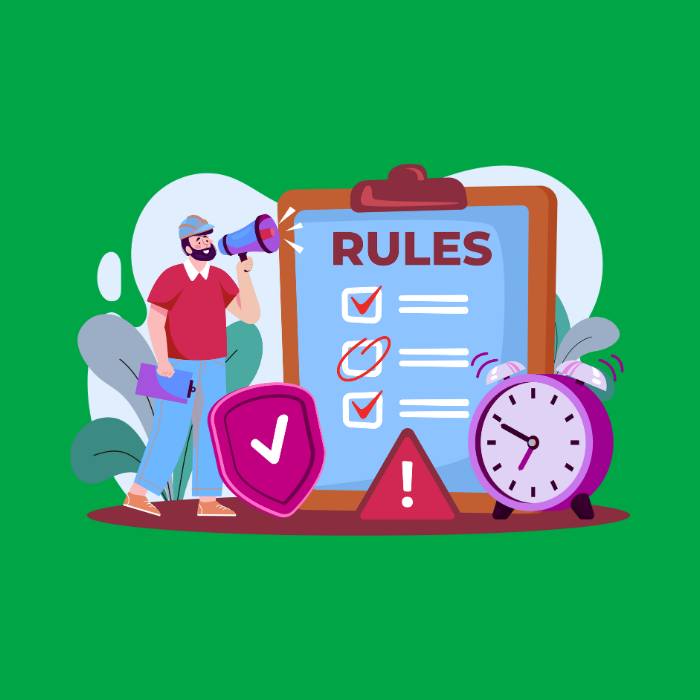When you hear “compliance GRC,” you might picture a never-ending spreadsheet, a stressed-out compliance officer, and a pot of coffee that’s been sitting since last quarter. But let’s get one thing straight, governance, risk, and compliance doesn’t have to be dry. In fact, when done right, it can be your organization’s secret weapon for innovation, agility, and even… fun (yes, we said it).
So let’s ditch the corporate jargon for a second and break down why compliance GRC is kind of a big deal and how the right tools, mindset, and strategy can make it a lot more enjoyable (and effective).
So… What Does GRC Stand For Again?
Let’s quickly recap: GRC stands for Governance, Risk, and Compliance.
- Governance: Setting up the rules of the game and making sure everyone plays fair (aka robust governance).
- Risk management: Identifying potential obstacles early and developing a strategy to address or navigate around them. This includes your risk assessment, risk mitigation, and overall risk management strategy.
- Compliance: Compliance helps you avoid fines, lawsuits, and embarrassing data breaches that make front-page news. General data protection regulation (GDPR) regulations are no joke.
Together, these pieces form your GRC framework. A structured approach that helps your company manage risk, stay on the right side of regulatory compliance, and reliably achieve objectives.
Why Is Compliance GRC So Important?
Because it keeps your business alive and thriving. Without GRC, your company might:
- Miss compliance requirements and face fines
- Leave identified risks unchecked
- Waste adequate resources on guesswork
- Lose the trust of key stakeholders

But with a strong GRC strategy? You can:
✅ Align with strategic goals
✅ Tackle cybersecurity risks and legal risks with confidence
✅ Improve business operations and lower operational costs
✅ Empower your compliance teams and security teams to work smarter
In short, GRC helps you achieve business objectives without constantly putting out fires.
How GRC Software Makes It All Way Easier
Enter: GRC software and GRC tools.
These aren’t your clunky old internet tools from 2009. Modern GRC solutions are sleek, powerful, and, dare we say, kind of fun. They let you:
- Automate grc processes like policy updates and risk logs
- Track your compliance management across departments
- Launch real-time risk assessment dashboards
- Enable continuous monitoring for changes in regulatory requirements
- Streamline internal auditing and implementing controls
- Make the chief compliance officer and chief risk officer very, very happy
A good GRC system helps everyone from grc professionals to your IT intern stay aligned with your business objectives, reduce cyber risk, and mitigate identified risks before they turn into budget-burning issues.

GRC Strategy Tips (Without the Boredom)
So how do you create an effective GRC program that people actually use?
- Start with your goals – What are you really trying to protect or achieve? (Think: growth, data trust, not getting sued.)
- Map the risks – Use the risk management process to highlight what could go wrong and how to respond.
- Build a team – Empower GRC professionals and your compliance function with the right GRC capabilities and authority.
- Pick the right tools – Implement GRC software that supports real-time data, alerts, and integrations (no more copy-pasting into Excel).
- Make it collaborative – GRC isn’t just for auditors. Involve key stakeholders across departments so they own their part of the puzzle.
GRC implementation works best when it’s collaborative. Bring your teams into the process early to build alignment, clarify responsibilities, and ensure smoother adoption across the organization.
Why GRC Is a Superpower, Not a Chore
Think of GRC activities as a GPS for your company. Without it, you might hit a pothole or drive off a cliff. But with a robust GRC framework, you can address uncertainty, navigate around compliance challenges, and get to your destination smoothly.
Plus, let’s not forget that good GRC:
- Helps you detect risks before they explode
- Keeps your internal controls tight
- Aligns your grc operations with real-world management processes
- Makes grc implementation feel less like a tax and more like a power move
Final Thoughts: GRC Can Be Your Company’s MVP
Forget the boring binders and outdated manuals. Compliance GRC today is about agility, transparency, and making smart decisions. Whether you’re rolling out a new grc program, refining your grc strategy, or trying to convince your CFO to invest in better grc tools, remember this:
GRC isn’t a barrier—it’s the framework that guides smarter, safer decisions.
It protects your people, your data, and your dreams. And with the right mindset and software, it can actually be… fun. Or at the very least, way less painful than a surprise audit.
Frequently Asked Questions (FAQ)
1. What is GRC, and why does it matter for my business?
GRC stands for Governance, Risk, and Compliance. It’s a framework that helps organizations make informed decisions, manage risk proactively, and stay aligned with legal and regulatory requirements. A strong GRC strategy helps reduce costs, avoid fines, and build trust with stakeholders.
2. How does GRC software actually help?
GRC software streamlines complex processes like risk assessments, policy management, and regulatory tracking. It replaces manual spreadsheets and emails with automated workflows, real-time dashboards, and built-in alerts—making compliance faster, smarter, and easier to manage across teams.
3. Is GRC just for large enterprises or regulated industries?
Not at all. While GRC frameworks are essential for financial services and healthcare, they also help growing companies manage internal risks, stay audit-ready, and scale responsibly. Any business that handles sensitive data or faces regulatory oversight can benefit from GRC tools.
4. What makes a GRC program effective?
An effective GRC program is proactive, collaborative, and supported by the right tools. It starts with clear goals, maps out risks, assigns responsibilities, and leverages modern software to ensure everyone—from compliance officers to team leads—stays aligned and informed.
Ready to simplify GRC? Let Skematic show you how.Request a Demo



